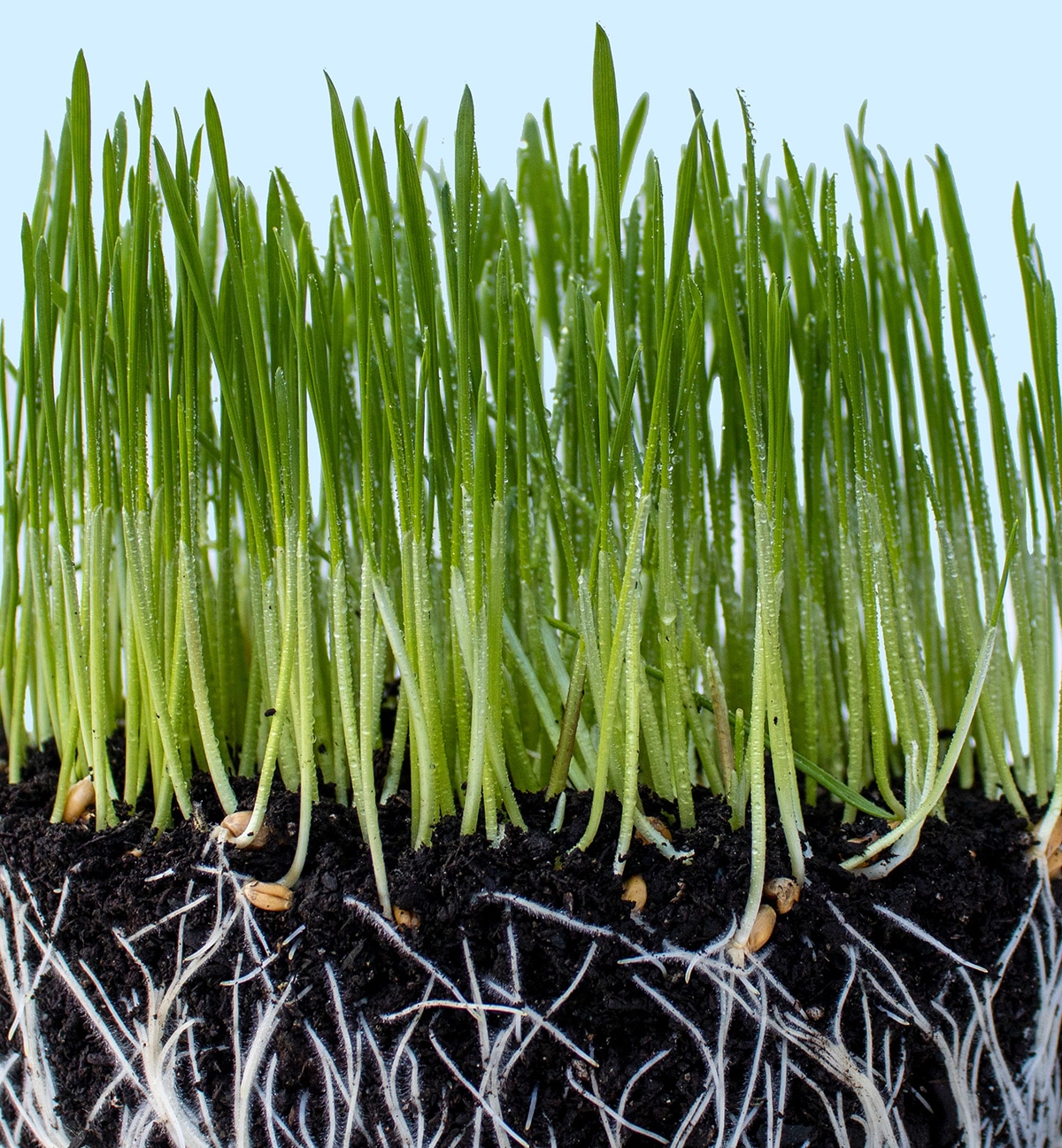Preparing Your Lawn for the Fall
A Step-by-Step Guide
Year after year, as the seasons cycle from the spring’s bloom to the fall’s resplendent display, your lawn requires different care. Among all the seasons, fall preparation can be the most consequential. At All Seasons Outdoor Maintenance, we pride ourselves on the depth of our knowledge and our unwavering commitment to keeping your lawn healthy and beautiful through routine residential lawn care services. With this guide, we aim to share some of our expert knowledge with you.
Introduction
Transitioning from summer’s heat to cooler fall temperatures is critical for your lawn. It’s a time of restoration and replenishment and a time to prepare for the dormancy of winter. With our years of experience in lawn care, we have seen firsthand the impact of adequate fall preparation and the detriment caused by its absence.
Why Preparing Your Lawn for Fall is Crucial
At All Seasons Outdoor Maintenance, we firmly believe in the power of proactive care. Regarding fall lawn care, being proactive can spell the difference between a thriving lawn come spring and a struggling one. There are vital processes under the fall’s guise of falling leaves and shorter days that set the stage for a lawn’s health during the next growing season.
 During fall, the soil temperature remains warm enough to facilitate root growth, but the cooler air slows the growth of the grass blades. This is an optimal condition for your lawn to repair itself from the summer’s stress and strengthen its roots. Failing to leverage this natural advantage by not properly preparing your lawn for fall can lead to a weakened lawn that’s more susceptible to disease, pests, and harsh winter weather.
During fall, the soil temperature remains warm enough to facilitate root growth, but the cooler air slows the growth of the grass blades. This is an optimal condition for your lawn to repair itself from the summer’s stress and strengthen its roots. Failing to leverage this natural advantage by not properly preparing your lawn for fall can lead to a weakened lawn that’s more susceptible to disease, pests, and harsh winter weather.
Moreover, a properly prepared lawn will fare better during winter and rebound more efficiently in spring. It will be in a better position to utilize the spring’s surge of growth to become greener and denser rather than struggling to recover from winter. At All Seasons Outdoor Maintenance, our decades of experience in the industry have shown us time and time again the truth of this premise.
Through this step-by-step guide, we aim to equip you with the necessary knowledge to make the most of the fall season and ensure your lawn remains healthy, resilient, and vibrant. Let’s embark on this journey toward a better understanding fall lawn care.
Understanding Your Lawn’s Needs
The science of lawn care goes beyond the seasons and the weather. It delves into the specifics of your lawn, understanding its unique characteristics and needs. At All Seasons Outdoor Maintenance, we appreciate the variety and complexity that comes with each lawn, and we understand the importance of customizing lawn care based on these individual differences.
Knowing Your Grass Type
One fundamental aspect of understanding your lawn is knowing your grass type. There are numerous grass species, each with distinct growth patterns, preferred climates, and care requirements. Some grasses thrive in the cooler fall and spring weather. We often see Kentucky Bluegrass in our local area, but other common cool-season grasses include Perennial Ryegrass, Tall Fescue, and Fine Fescue.
Recognizing your grass type may seem daunting, but it doesn’t have to be. With the experience we have gained from maintaining a wide array of lawns at All Seasons Outdoor Maintenance, we can guide you in identifying your grass type. Once you have this knowledge, you can understand its specific needs, optimal growing conditions, and how it responds to different care techniques. This knowledge empowers you to make informed decisions that enhance your lawn’s health and longevity.
A great resource related to this topic is:
The Importance of Mowing Height for Healthy Summer Lawn Care
Assessing Your Lawn’s Current Condition
Equally important to knowing your grass type is assessing your lawn’s condition. Look at it like a health check-up for your lawn – a crucial measure that provides invaluable insight into its well-being. This involves looking for signs of stress, such as brown patches or bare spots, signs of pest infestations or disease, the state of the soil, and even thatch.
Owning a lawn care company means I have been fortunate enough to have encountered and dealt with various lawn conditions in our many years of service. We can affirm that a thorough lawn assessment forms the backbone of effective lawn care. It enables you to identify problem areas early and address them promptly, which can be the difference between a minor, easily fixable issue and a more serious, time-consuming problem.
By understanding your lawn’s type and condition, you are equipped with the key knowledge underpinning effective lawn care. This understanding is an important first step in preparing your lawn for fall, and we are here to guide you every step of the way.
See more in our comprehensive guide: How to Conduct a Comprehensive Lawn Care Assessment
Step-by-Step Guide to Prepare Your Lawn for Fall
Now that you understand your lawn’s specific needs and have assessed its current condition, it’s time to roll up your sleeves and dive into the hands-on portion of fall lawn preparation. Let’s start with the first critical steps: dethatching and aeration. At All Seasons Outdoor Maintenance, we have perfected these processes over the years and understand their crucial role in promoting a healthy lawn.
Step 1: Dethatching and Aerating the Lawn
The first critical steps in fall lawn preparation involve dethatching and aeration. Thatch – a layer of dead grass, roots, and debris – can prevent water, nutrients, and air from reaching the grassroots. Dethatching removes excess thatch, enabling better nutrient absorption. Meanwhile, aeration, achieved by creating small holes in the soil, breaks up compacted soil and further improves the flow of essential resources to the roots. At All Seasons Outdoor Maintenance, we’ve seen the transformative impact these two processes can have on a lawn. Using specialized tools like a dethatching rake or a power dethatcher for dethatching and a garden fork or a lawn aerator for aeration can make these tasks more manageable. Remember that each lawn is unique and may require a tailored approach, so understanding your lawn’s specific needs is crucial.
Step 2: Mowing and Edging
As the season changes, so should your mowing and edging routine. During the fall, gradually decrease the mowing height with each cut until you reach the ideal height for your grass type. This will allow more sunlight to reach the grass crown, reducing the risk of winter diseases. It’s also important to maintain clean edges along your lawn; this enhances its aesthetic appeal and helps prevent the encroachment of weeds into flower beds and walkways.
Step 3: Weed Removal
Weeds compete with grass for nutrients, water, and sunlight, so it’s crucial to remove them before they get a chance to spread. Pulling weeds out manually, roots and all is the most effective way to remove them. However, you might need to consider mechanical removal or non-chemical weed control methods for larger lawns or serious infestations.
Step 4: Seeding
Fall is an excellent time for seeding your lawn, especially for cool-season grasses. The warm soil, cool air, and typically more frequent rainfall provide ideal seed germination and growth conditions. Be sure to select a high-quality grass seed that is well-suited to your specific region and lawn conditions.
Step 5: Mulching
Adding a layer of organic mulch to your lawn in the fall can help protect the soil, retain moisture, and suppress weeds. Mulch also gradually breaks down and improves soil quality. As for fertilizing, it’s essential to replace the nutrients that were depleted during the summer. We offer mulching services should you need help bringing in and laying down mulch.
Step 6: Trimming and Pruning
Trimming and pruning your hedges, shrubs, and trees is not only about keeping them neat and attractive. Services like hedge trimming and tree trimming improve the overall health and vigor of greenery. Removing dead or diseased branches reduces the chance of further disease and pest issues. Pruning also improves air circulation and light penetration, promoting healthier growth.
By following these steps, you’re setting your lawn up for success. The fall season preparation can seem extensive, but each step contributes to a healthier, stronger, and more beautiful lawn. At All Seasons Outdoor Maintenance, we’re here to guide you through the process, ensuring your lawn gets the best possible care for each season.
Expectations and Outcomes from Proper Fall Lawn Preparation
When you invest time and effort into properly preparing your lawn for the fall, it’s reasonable to wonder what benefits you can expect. As seasoned lawn care experts at All Seasons Outdoor Maintenance, we assure you that your dedication will be rewarded. A well-prepared lawn can exhibit increased vigor, resilience, and beauty, proving to be a source of pride and enjoyment.
The exact outcomes can depend on several factors, including your grass type, local climate, and the specific lawn care practices you implement. However, some general benefits are almost universally experienced when a lawn is appropriately prepared for the fall.
The Benefits of Proper Fall Lawn Preparation
The transformation that a well-prepared lawn undergoes is genuinely remarkable. From deep within the soil to the tip of each grass blade, the effects of your diligent fall preparation can result in numerous visible and underlying benefits. Not only can you expect a healthier, more robust lawn, but you’ll also be setting the stage for an even more magnificent display come springtime.
Here are some of the key benefits you can expect from adequately preparing your lawn for fall:
- Enhanced root growth
- Increased resistance to pests and diseases
- Better nutrient absorption
- Improved water management
- Increased lawn thickness
- Decreased weed competition
- Better winter survival
- Higher spring green-up
- Increased lawn longevity
- Enhanced lawn aesthetics
Common Questions about Fall Lawn Maintenance
Can I get assistance in determining my grass type and assessing the condition of my lawn? How does the process work?
A: Yes, absolutely! Our team of experts is well-versed in grass species and their specific needs. We provide an on-site assessment service where we inspect your lawn’s condition, identify your grass type, and suggest a tailored care strategy based on our findings.
What specific services are offered to help with fall lawn preparation? Are there packages that cover the entire process from dethatching to pruning?
A: Yes, we offer a range of services tailored for fall lawn preparation. These include dethatching, aeration, mowing, edging, weed removal, seeding, mulching, fertilizing, and trimming. We do offer comprehensive packages that encompass the entire process, ensuring your lawn is thoroughly prepared for the fall and subsequent winter. Our fall lawn cleanup services will have you in tip-top shape for the a healthy spring.
I have trees and shrubs in my yard. Can I get assistance with trimming and pruning them properly for the fall season?
A: Yes, indeed! We understand that pruning and trimming are essential for the health and aesthetics of your trees and shrubs. Our team of experts can provide appropriate pruning services to ensure the health of your trees and shrubs as part of your overall lawn care.

